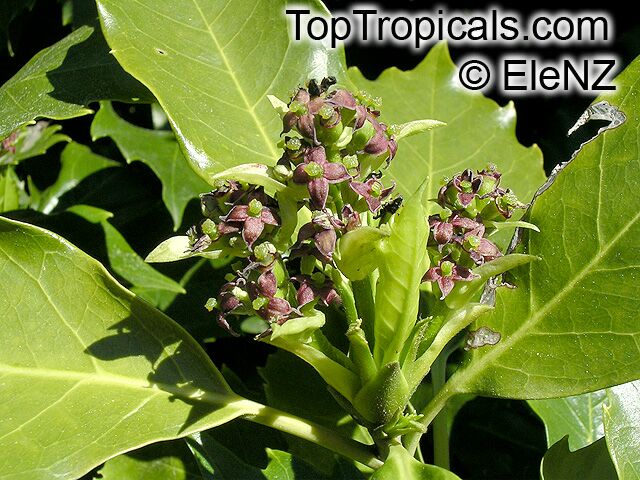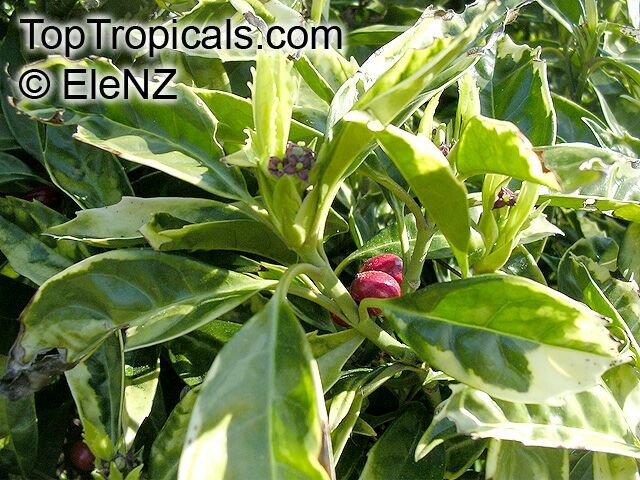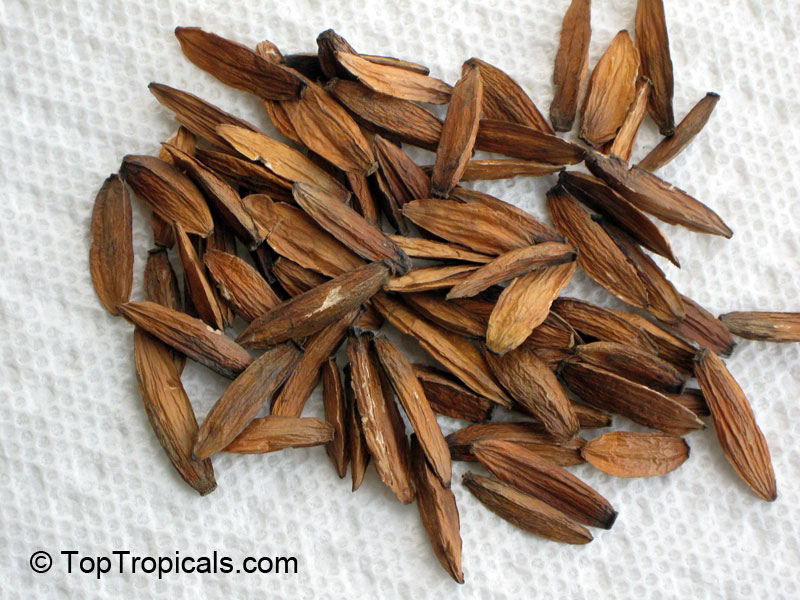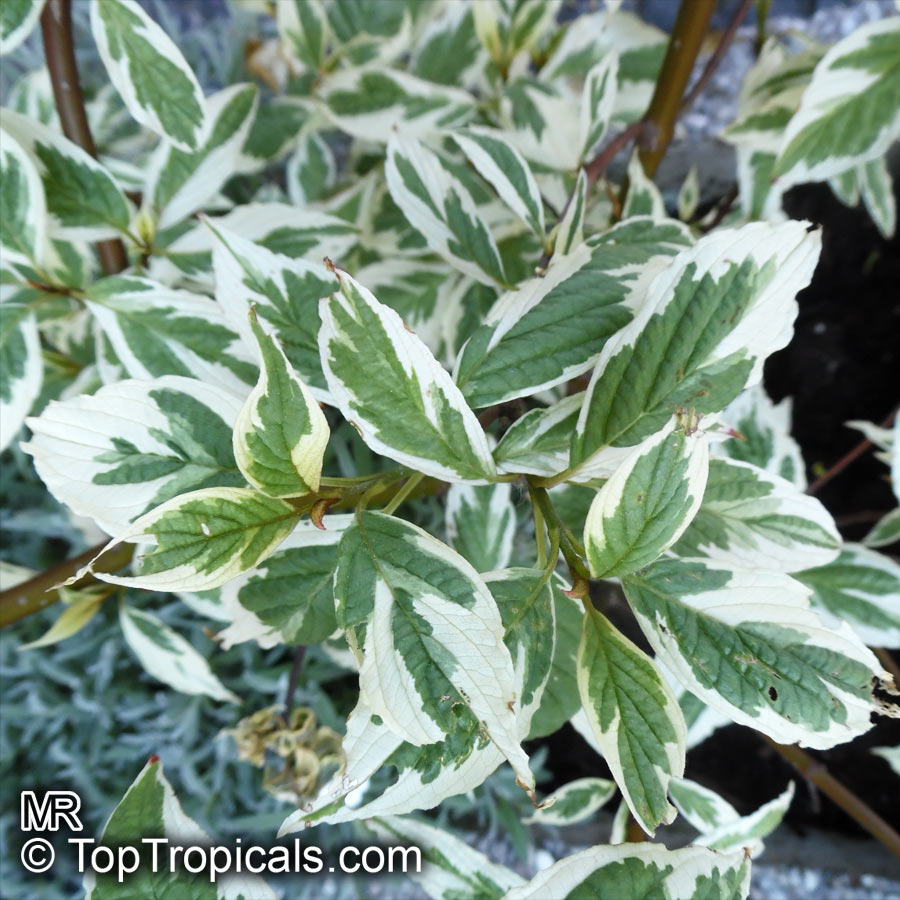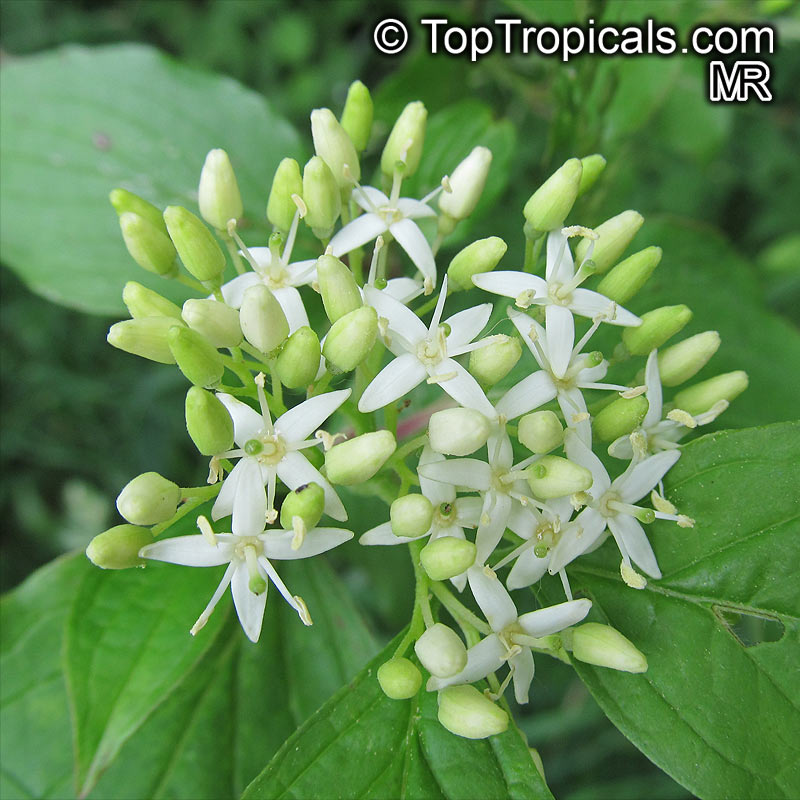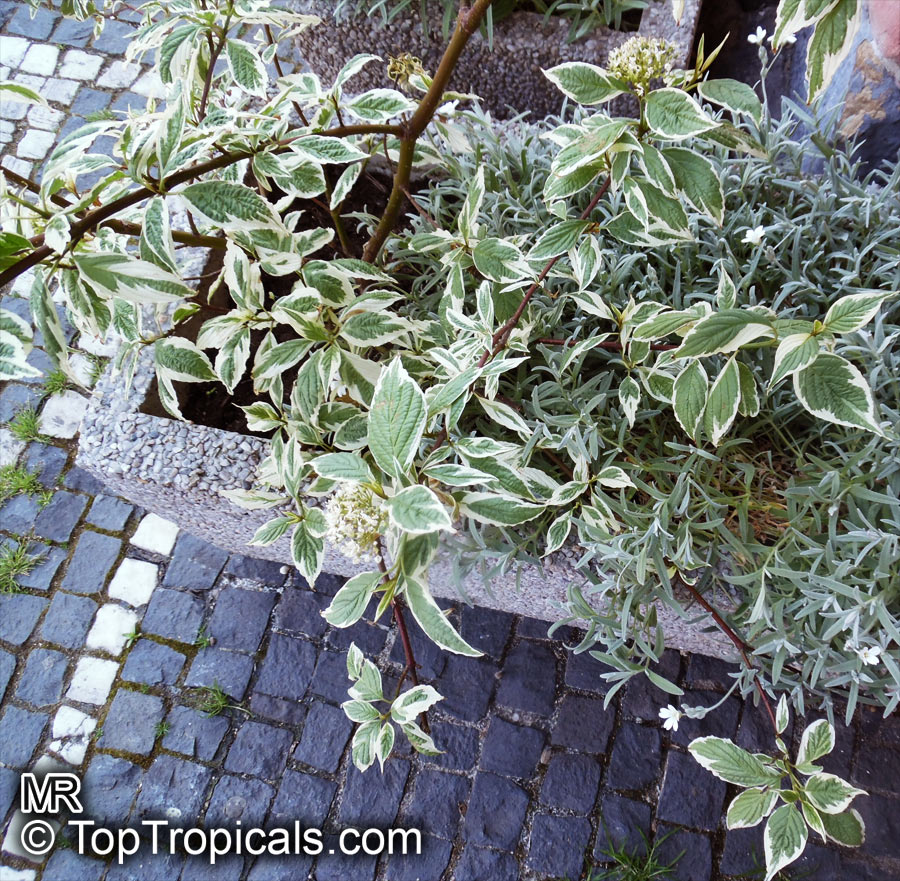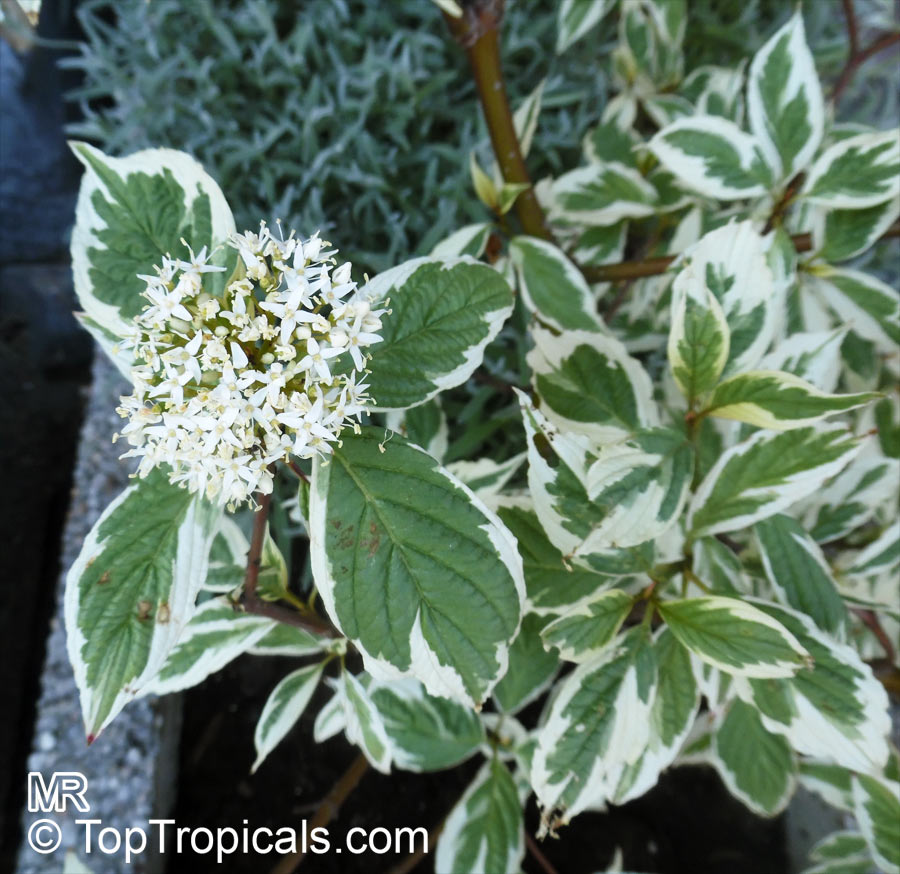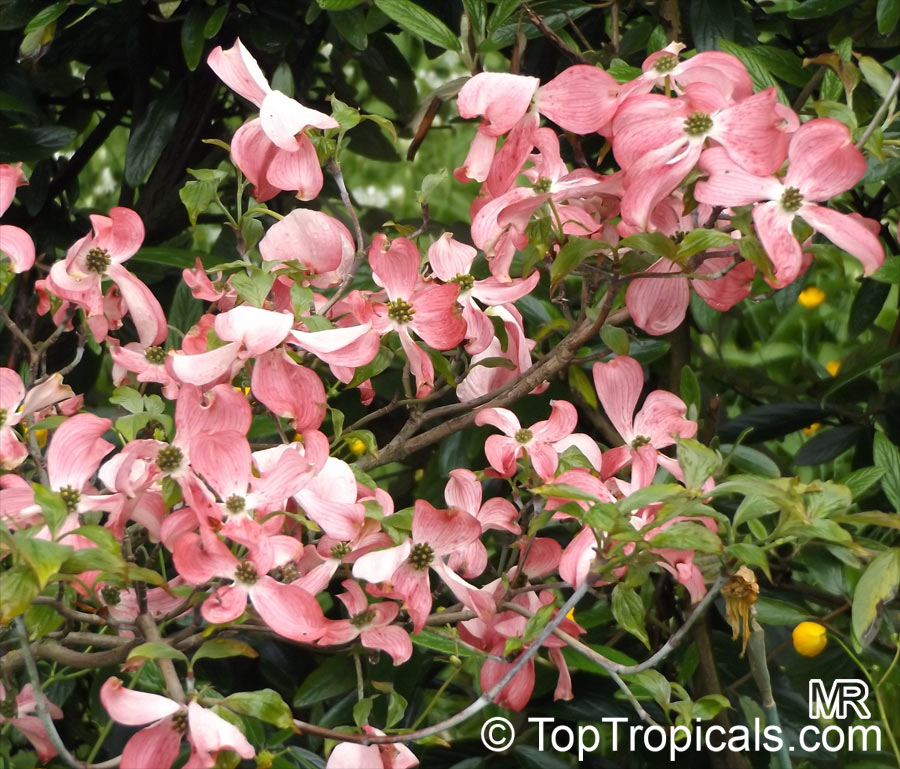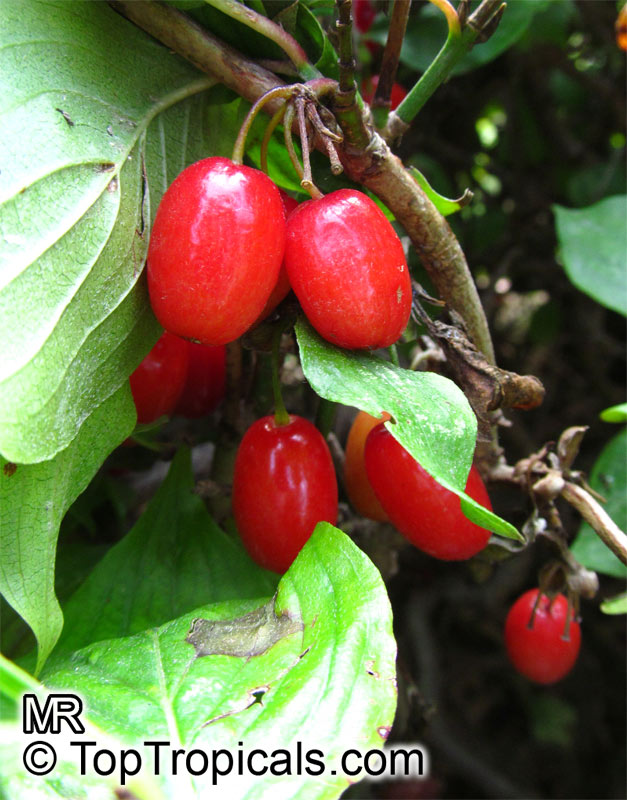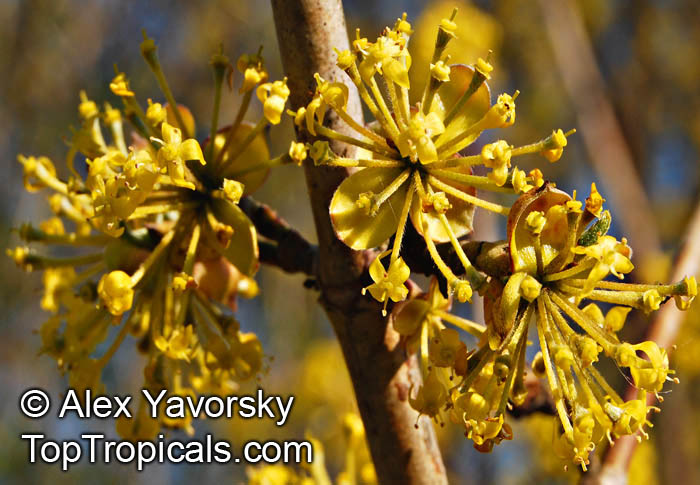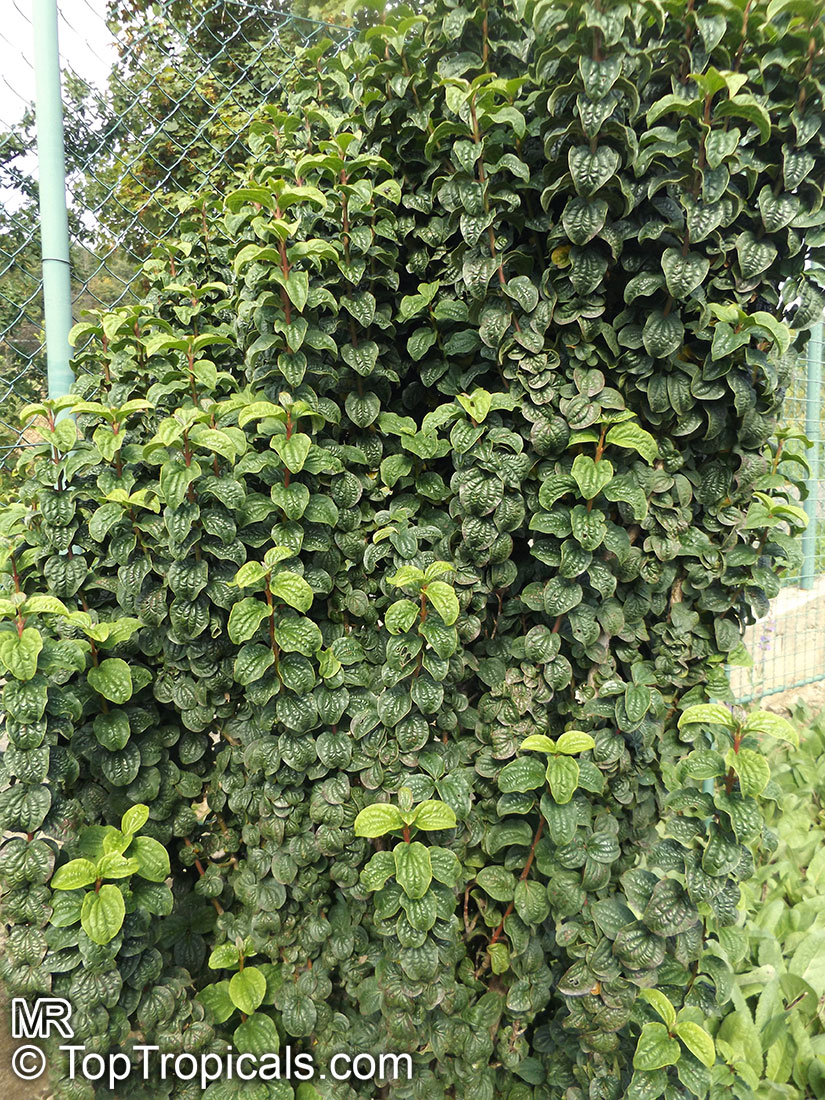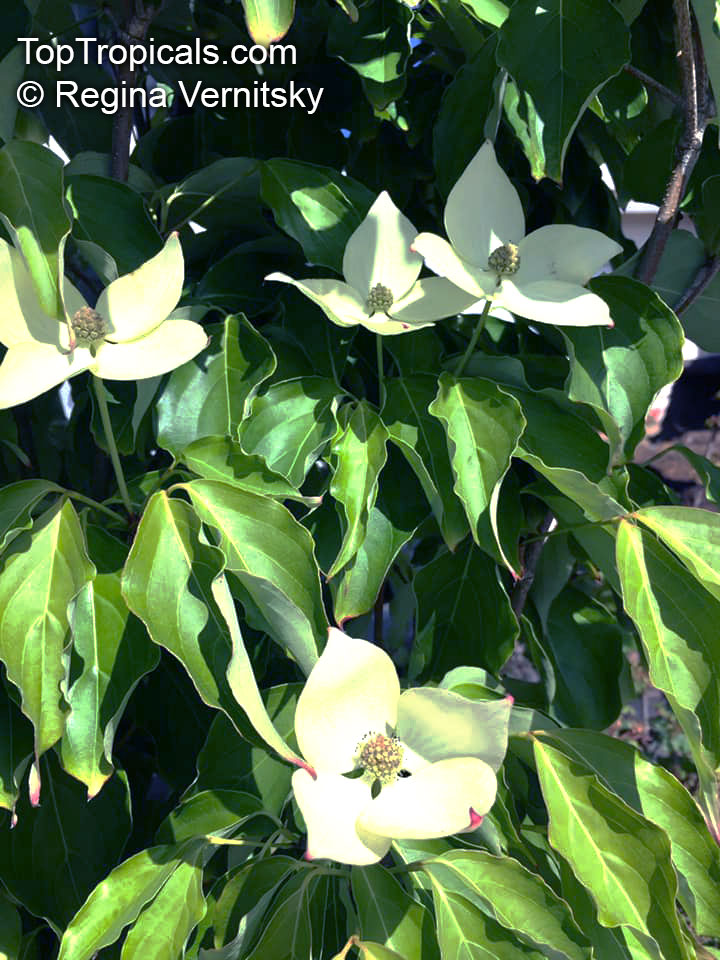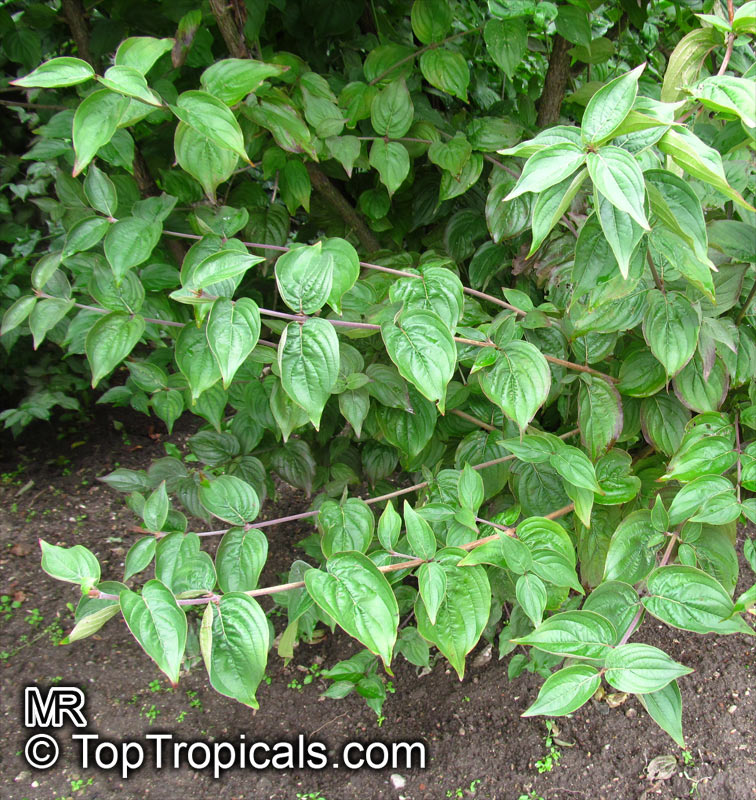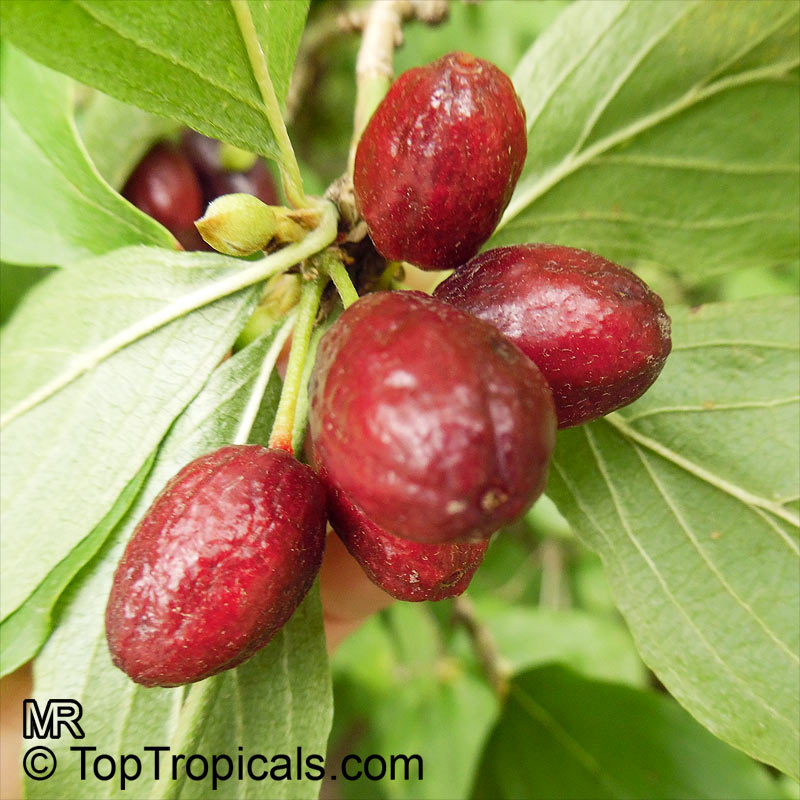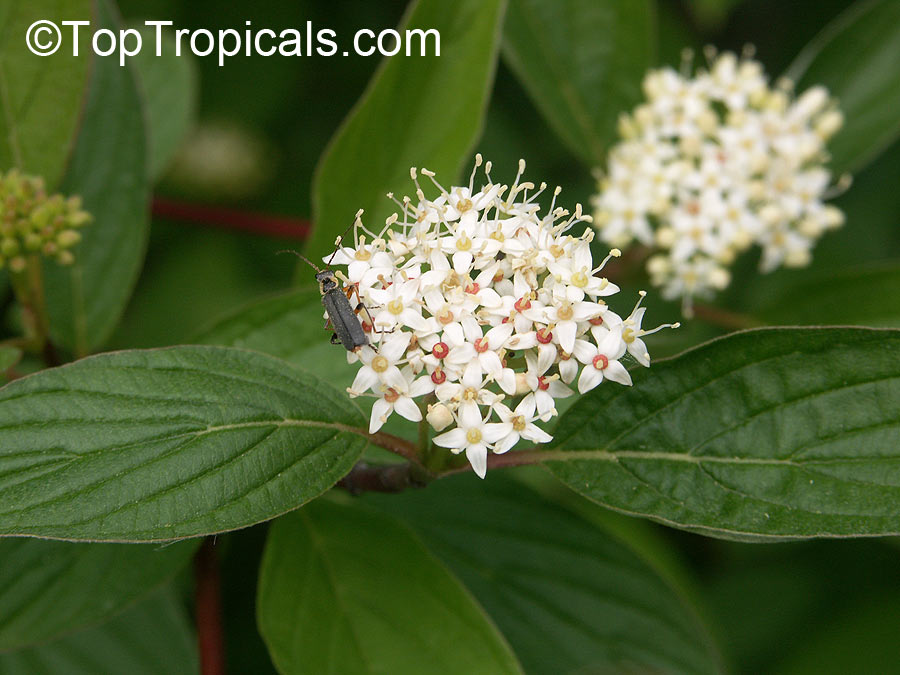Cornaceae - Botanical Family
Top Tropicals Plant Encyclopedia
| Number of plants found: 8 |
Botanical name: Aucuba japonica
Common names: Japanese Aucuba, Japanese Laurel
Family: Cornaceae
Origin: East Asia










This is a large evergreen shrub with a height ranging from 5-10 feet and is a native to East Asia. It can be used for creating bonsai and displays ornamental foliage that is usually a mix of yellow, green and white. This unusual colored foliage gives this plant its ornamental appeal. The plant requires regular water but is tolerant of drought or when the soil starts to dry out and requires moderate water overall. It is shade and semi-shade tolerant. It is also salt tolerant and even can survive in seaside locations.
When it comes to caring for this particular plant, it is important to note it is a relatively low maintenance plant. This plant grows best in USDA hardiness zone 6-10. When planting in a pot in cold regions, it is best to bring the pot indoors when freezing weather is expected. This is the best way to ensure protection from weather damage and the lower temperatures.
Botanical names: Cornus capitata, Benthamia fragifera, Dendrobenthamia capitata
Common names: Himalayan Strawberry tree, Ewergreen Dogwood, Bentham's Cornus
Family: Cornaceae
Origin: China to the Himalayas









It is also used as an ingredient in food and beverages.
Those who live near the Himalayas know to look out for Cornus capitata. Called Himalayan Strawberry Tree, this pack power-packed in a small package. It reaches 10-20 ft in height, making it beautiful option for bonsai. It thrives in full sun and semi-shade and prefers regular water, but no waterlogging. This evergreen tree attracts pollinators with its bright yellow and orange flowers. Once mature, the plant can even tolerate short period of freezing temperatures - thirty degrees F or less typically in USDA Planting Zones 9-11.
The real charm of Cornus capitata is the fruit it produces in the early summer. These red fruits have a taste reminiscent of strawberry and are edible, but they ripen quickly and once they fall off, they are difficult to find. This small fruits can sometimes be quite fruitful and produce an abundance of fruits. Besides being sweet and tasty, the fruits of Cornus capitata are nutrient dense, full of fiber, Vitamin C and other antioxidants. They are used as a food and beverage ingredient, adding flavor and nutrition.
When it comes to care, Cornus capitata can be grown in pots even in cold winters, although some measures may be taken to ensure its survival. A balcony or terrace is the ideal place for growth and wintry protection. Adding a layer of mulch around the pot helps preventing soil from freezing, and covering it with a fabric sheeting on particularly cold days can keep this plant stay healthy and happy for many years to come.
Botanical names: Cornus controversa, Swida controversa
Common names: Giant Dogwood, Wedding Cake Tree
Family: Cornaceae
Origin: Japan, China











Dense clusters of glossy foliage turn brilliant shades of purples, oranges, and reds in autumn and is accompanied by new, cream colored twigs.
Cornus controversa, also known as Giant Dogwood, is native to Japan and China. It is a large shrub that grows anywhere from 5-10 feet tall or a small tree from 10-20 feet tall. In order to thrive, this hardy ornamental plant should be grown in full sun or semi-shade and given regular or moderate watering.
This deciduous shrub produces large, off-white flowers in summer which attract butterflies and hummingbirds. It is characterized by beautiful, ornamental foliage that changes color in autumn to shades of purples, oranges and reds, as well as new, cream-colored twigs. The mature plant is cold hardy in USDA Zone 6-9.
For planting in cold regions, Cornus controversa can best be grown in a pot which will help to protect the roots during the coldest months of the year. The container can be moved indoors to a cool but sunny area to give the plant a much needed break from harsh winter weather. Once the danger of frost is gone and the temperatures are warm enough, the pot should be moved back to its original location and allowed to thrive in full sun or semi-shade with regular or moderate watering.
Botanical name: Cornus florida
Common name: Flowering Dogwood
Family: Cornaceae
Origin: Eastern United States










Flowering dogwood, also known as Cornus florida, is a perennial flowering plant that is native to the Eastern United States. It is a popular ornamental plant and can be used as a full-size flowering tree, medium-size shrub, or bonsai specimen in temperate regions. The tree typically reaches a height of 10-20 ft at maturity and has green deciduous leaves that turn red and purple in the autumn.
The plant is widely grown for its stunning showy spring flowers. Flowering dogwood blooms in the spring with four petal-like bracts mostly in white or pink, surrounding a mass of tiny yellowish flowers. Its flowers are loved by butterflies and hummingbirds, making the tree a great addition to any garden as it can attract wildlife. The growth rate is moderate, and minimal pruning is required for plant care.
Planting dogwood in an area with partial to full sun and moderate water is recommended. It is hardy in USDA Zone 6-9. If planting in a pot and in a cold region, move the container indoors during winter, and take outdoors in summer. Flowering dogwood is an excellent ornamental plant suitable for many climates and is an attractive addition to any garden. It is an ideal choice for novice gardeners due to its showy blooms and easy-care nature.
Botanical name: Cornus mas
Common name: Cornelian Cherry Dogwood
Family: Cornaceae
Origin: Central and southern Europe and western Asia












Small yellow inflorescences are numerous and clustered on the bare stems in March, effective for about three weeks in late Winter and heralding the impending arrival of Spring.
Botanical name: Griselinia sp.
Common names: New Zealand Privet, Broadleaf, Puka
Family: Cornaceae
Origin: New Zealand







Native to New Zealand, Griselinia sp. (New Zealand Privet) is widely used as an ornamental foliage and hedging plant, with its thick leathery, yellow-green leaves. This small tree usually grows 10-20 ft tall and can showcase a magnificent shape when well maintained.
This hardy plant is low maintenance and easy to cultivate in a variety of environments. It generally thrives in full sun to semi-shaded areas and can tolerate moderate amounts of water. However, it's important to ensure the soil is well-drained, as Griselinia sp. does not tolerate wet feet.
It's suitable for USDA Zones 7-8, making it an ideal choice for gardeners living in cold climates.
When planting Griselinia sp. in a pot (especially when in a cold climate), it's important to monitor the soil moisture levels and make sure the plant is in a slightly sheltered spot. It's also beneficial to provide a layer of mulch to help shield the roots from frost. If outdoors, make sure to position it in a spot that receives enough sunlight.
Use link to repeat this search:
https://toptropicals.com/cgi-bin/garden_catalog/cat.cgi?search_op=and&keyword_op=and&language=e&family=Cornaceae&number=10
&no_change_lang=1&user=tt&sale=1&first=0









